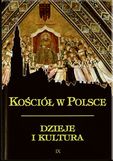FORMACJA DUCHOWIEŃSTWA GALICYJSKIEGO
Formation of Clergy in Galicia
Author(s): Stanisław PiechSubject(s): History
Published by: Katolicki Uniwersytet Lubelski Jana Pawła II - Wydział Teologii
Keywords: Clergy formation; Galicia; jozephinizm
Summary/Abstract: The thorough reform of theological studies carried out in the Austrian Empire in the years 1774-1776 by Franz Stephan Rautenstrauch significantly limited scholasticism. On the other hand, it increased the area of studies in Sacred Scripture, patrology and Church history. It introduced pastoral theology as an independent discipline along with exercises in homiletics and catechesis. Theology could be studied only after completing secondary school and philosophical studies. Studies in theology were to last five years. In the year 1785, the time of studies was shortened to four years. In the reorganization of theological education, apart from the undoubted raising of the level of education, unfortunately, they accepted a principle of educating clerical youth based on officials loyal to the political and Church national system. Josephinism cast a long shadow on the formation of Galician clergy. In the year 1783, Czar Joseph II closed all diocesan and religious order seminaries and opened general seminaries. In Lvov, two general seminaries were created, Roman Catholic and Greek Catholic. Studies primarily took place at the Faculty of Theology at Josephine University and lasted four years, thus the fifth year was dedicated to practical exercises in the area of catechesis, homiletics and Church singing in a so-called priest home. Czar Leopold II in the year 1790 dissolved the general seminaries and allowed bishops to open their own diocesan seminaries. Nevertheless, problems related with returning Church estates confiscated in the year 1783 from diocesan seminaries and such diversified matters as the positions of Galician bishops caused that the Latin general seminary in Lvov continued to function for almost another 30 years. The main Greek Catholic seminary lasted to the year 1893. The four year study program, on account of a serious lack of priests, was shortened to three years, but already in 1812 it adjusted to the general Austrian program and was extended to four years. Chosen, talented alumni of bishops were sent to studies in Vienna, where the next Royal Greek Catholic Seminary (1775-1784), the Viennense Imperial-Royal City Seminar (1802-1848) and the Greek Catholic Central Seminary (1852-1893) functioned. Alumni of these institutions were students of the Vienna University Theology Faculty. In Vienna, the elite Higher Scientific Institute for Diocesan Clergy at St. Augustine’s (1816-1919), called the Frintaneum, functioned. These institutions formed over a dozen future Galician bishops and tens of universities and Galician seminaries’ professors.
Journal: Kościół w Polsce. Dzieje i kultura
- Issue Year: 2012
- Issue No: 11
- Page Range: 81-96
- Page Count: 11
- Language: Polish

